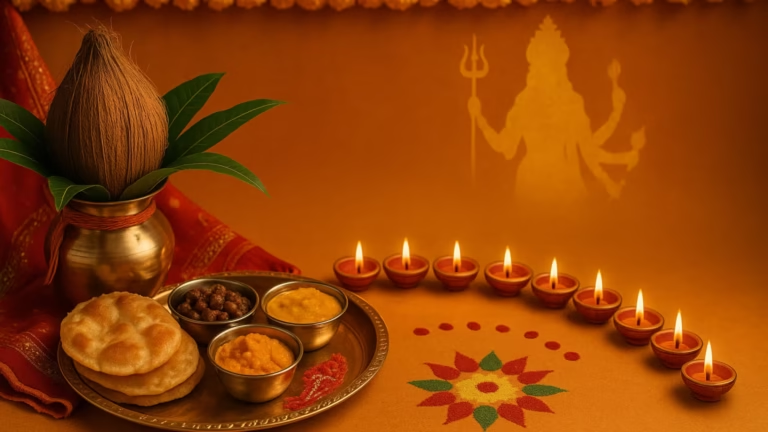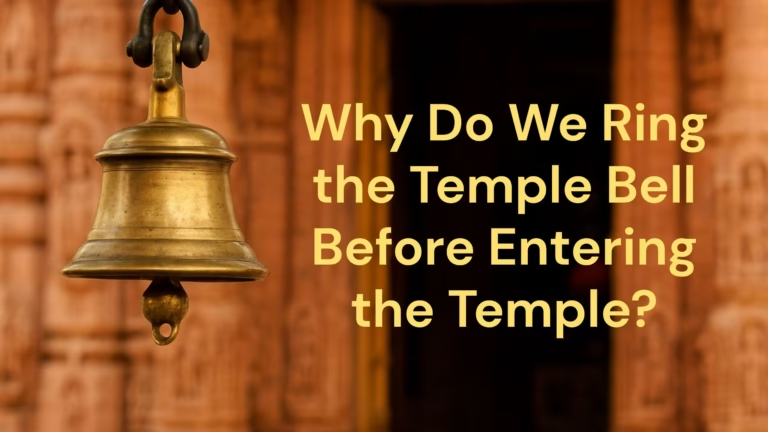Hinduism, one of the world’s most ancient and complex religions, has a rich literary tradition. Among its many sacred texts, the Puranas occupy a special place. These ancient scriptures are more than just stories; they are a window into the soul of Hindu philosophy, cosmology, history, and devotion. In this article, we will explore the 18 Puranas of Hinduism, their names, meanings, and the profound wisdom they offer to spiritual seekers.
What Are the Puranas in Hinduism?
The term Purana in Sanskrit means “ancient” or “old narrative.” The Puranas are a genre of important Hindu religious texts that complement the Vedas. While the Vedas focus on rituals and hymns, the Puranas narrate mythological stories, genealogies of gods and sages, cosmic cycles, and moral teachings. These scriptures are part of the Smriti literature and are believed to be compiled by Sage Vyasa.
Read Also: Pitru Paksha: What Is It and What to Do During Pitru Paksha?
How Many Puranas Are There in Hinduism?
There are 18 Mahapuranas (major Puranas) and 18 Upapuranas (minor Puranas), totaling 36 Puranas in classical Hindu tradition. Among them, the 18 Mahapuranas are considered the most authoritative and are widely studied and recited.
List of 18 Mahapuranas Names and Themes
Below is a complete list of the 18 Mahapuranas along with a brief description of their primary focus and teachings:
1. Vishnu Purana
Focuses on Lord Vishnu and his ten avatars (Dashavatara), including Rama and Krishna. It covers creation myths, duties of kings, moral order (dharma), and the four goals of life (purusharthas). This Purana explains Vishnu’s role as the preserver of the universe and the cyclical nature of time. It also elaborates on the interactions between deities, humans, and sages, making it a foundational text in Vaishnavism.

👉 श्री विष्णु पुराण (सचित्र हिंदी अनुवाद सहित) – गीता प्रेस गोरखपुर
2. Shiva Purana
Dedicated entirely to Lord Shiva, this Purana discusses his cosmic role, divine pastimes, various forms such as Rudra and Mahadeva, and his union with Shakti. It includes the tales of Ganesha and Kartikeya, the significance of Kailash, and instructions on worship through rituals, mantras, and devotion. This Purana is deeply philosophical and central to Shaivism.

3. Bhagavata Purana
Regarded as one of the most beloved and widely read scriptures, it centers on the life and teachings of Lord Krishna, from his miraculous birth to his childhood pranks and divine exploits. It emphasizes bhakti (devotion) as the supreme path to liberation and includes profound philosophical discussions, particularly the Uddhava Gita. It also narrates the stories of other Vishnu incarnations and great devotees like Prahlada and Dhruva.
4. Padma Purana
This Purana underscores the importance of living a life of virtue, charity, and devotion. It describes various holy sites (tirthas), the glory of sacred rivers like the Ganga, and instructions for observing religious festivals and fasts. It contains multiple sections, including one devoted to Shiva and another to Vishnu, reflecting an inclusive spiritual outlook.
5. Narada Purana
Attributed to the divine sage Narada, this Purana promotes devotion through music, chanting, and moral behavior. It includes hymns, rituals, and theological discussions. Narada travels across the universe, engaging in spiritual discourse and enlightening beings through stories and wisdom. It inspires laypersons to incorporate spirituality into daily life.
6. Garuda Purana
Named after Garuda, Vishnu’s eagle mount, this Purana is best known for its detailed account of the soul’s journey after death. It describes karma, the afterlife, reincarnation, and rituals associated with death and ancestral rites. It also explores subjects like gemology, medicine, and astrology, blending spiritual and practical knowledge.

👉 Garud Puran (Sachitra Hindi Anuvad Sahit) – Geeta Press Gorakhpur
7. Agni Purana
Taught by Agni, the fire god, this encyclopedic Purana encompasses diverse knowledge. It covers temple architecture, iconography, statecraft, warfare, yoga, ethics, and rituals. It reflects the intellectual and spiritual curiosity of ancient Hindu thinkers and offers insight into many aspects of practical and spiritual life.
8. Bhavishya Purana
Unique among the Puranas, the Bhavishya Purana includes predictions about future events, cultural developments, and religious practices. It discusses the advent of different eras (Yugas), descriptions of coming kings and sages, and foretells major social transformations. It also emphasizes righteous conduct and worship practices.
9. Brahma Purana
Dedicated to Brahma, the creator god, this text explores the process of creation, the formation of the universe, and descriptions of sacred places, especially in Odisha. It integrates geographical, historical, and religious content, reflecting the vastness of early Indian cultural understanding.
10. Brahmanda Purana
This Purana deals with the structure of the universe, various cycles of time (kalpas), and cosmic evolution. It includes the Adhyatma Ramayana, a philosophical retelling of the Ramayana with an emphasis on inner spiritual truths. It also provides genealogies of gods, sages, and kings.
11. Linga Purana
Focusing on the worship of the Shiva Linga, this Purana explains its symbolic significance as a representation of the cosmic pillar and formless divine reality. It contains philosophical discussions on the nature of the universe and duality, and includes stories illustrating Shiva’s omnipresence and compassion.
12. Varaha Purana
Centered on Vishnu’s Varaha (boar) avatar, who rescues Earth from the cosmic ocean, this Purana discusses cosmology, duties of householders, holy pilgrimages, and principles of dharma. It encourages righteousness and devotion through rich mythological narratives and prescriptive guidance.
13. Skanda Purana
The largest among all the Puranas, it is devoted to Lord Skanda (Kartikeya), the son of Shiva and Parvati. It contains numerous Khandas (sections) on different pilgrimage circuits such as Kashi, Badri, and Kedarnath. It also explores rituals, temple worship, and the glories of various deities.
14. Vamana Purana
Named after the Vamana (dwarf) incarnation of Vishnu, it elaborates on his interaction with King Bali and the symbolism of humility, devotion, and divine intervention. It also details sacred geography, temple descriptions, and stories of other deities, making it an important resource for pilgrims.
15. Kurma Purana
This Purana, taught by the Kurma (tortoise) avatar of Vishnu, focuses on religious duties, philosophical teachings, and rituals. It contains the Ishvara Gita and outlines the responsibilities of different ashramas (life stages) and varnas (classes). It presents a blend of Shaiva and Vaishnava traditions.
16. Matsya Purana
Narrates the tale of the great deluge and how Vishnu, in the form of a fish, saved the Vedas and humanity. It discusses temple building, iconography, astronomy, and rites. It also includes instructions for ceremonies like cremation, and explanations of time and cosmology.
17. Markandeya Purana
This text is revered for the Devi Mahatmya, which extols the power of the Divine Mother (Shakti) and her battles against evil forces. It presents philosophical teachings on yoga, dharma, and the impermanence of life. Sage Markandeya’s dialogues offer timeless spiritual insight.

Sankshipt Markandeya Puran Hardcover – 1 January 2015 Hindi Edition by Geeta Press
18. Vayu Purana
Associated with Vayu, the wind god, this Purana presents ancient cosmological theories, genealogies of dynasties, and insights into the duties of kings and sages. It bridges mythology and early historical traditions and contains references to the Vedas and other Smriti texts.
Importance and Significance of the Puranas in Hinduism
The 18 Puranas are vital for understanding Hindu culture, values, and theology. Each Purana contains:
- Stories of gods and goddesses
- Cosmological insights
- Moral and ethical guidelines
- Ritual procedures and festivals
- Legends of ancient kings and sages
They serve not just as religious texts but also as historical and cultural records.
Why Were the Puranas Written?
The Puranas were written to make complex Vedic knowledge accessible to common people. Instead of technical hymns, they use engaging stories, making them easier to remember and pass down orally. They play a key role in teaching values and maintaining Hindu cultural identity.
Who Wrote the 18 Puranas?
All 18 Mahapuranas are traditionally attributed to Sage Vyasa, the legendary sage who also compiled the Mahabharata. However, modern scholars believe these texts evolved over centuries through oral traditions and contributions from many authors.
Frequently Asked Questions (FAQs)
Q1: How many Puranas are there in Hinduism?
There are 18 Mahapuranas and 18 Upapuranas, making a total of 36 main Puranic texts.
Q2: What are the names of 18 Puranas?
Some of the most well-known include Vishnu Purana, Shiva Purana, Bhagavata Purana, Skanda Purana, and Padma Purana. A complete list is provided above.
Q3: Are Puranas part of Hindu scriptures?
Yes. Puranas are part of Smriti texts in Hinduism and complement the Shruti literature like the Vedas and Upanishads.
Q4: What is the relevance of the Puranas today?
They continue to shape religious festivals, temple rituals, and spiritual teachings across Hindu communities globally.
Q5: Are Puranas myth or history?
They are primarily mythological but often include cultural and historical elements interwoven with moral and spiritual teachings.
Conclusion
The 18 Mahapuranas are not just ancient scriptures—they are spiritual guides, moral compasses, and cultural chronicles. They provide insight into the universe, the divine, and the soul’s journey. For those curious about Hinduism or seeking spiritual wisdom, reading the Puranas offers an enriching and enlightening experience.
Read Also: How to Make a Rental Agreement and What Rules You Must Know


